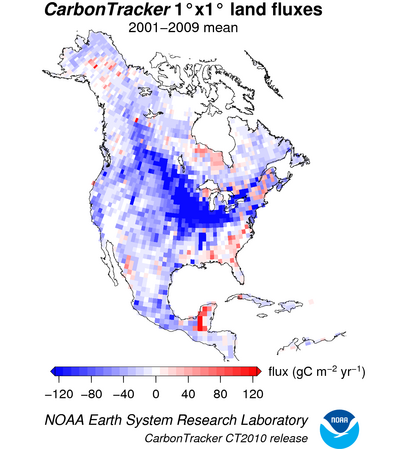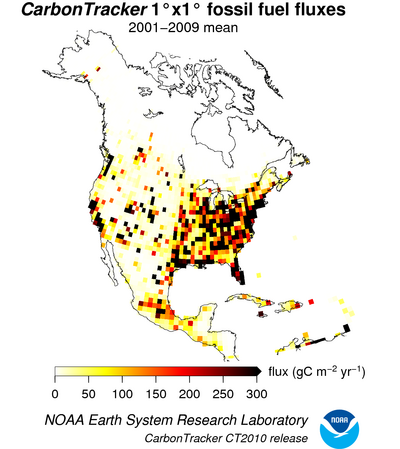Information
Home FAQ Project Goals Documentation Collaborators TutorialResults
Fluxes Observations Evaluation Visualization DownloadGet Involved
Suggestions E-mail List Contact UsResources
How to Cite Version History Glossary References BibliographyTutorial (CarbonTracker-CH4)
Please Note: CarbonTracker-CH4 is very similar to CarbonTracker-CO2. This tutorial gives a simple explanation of how CarbonTracker-CO2 works.
Why do we need CarbonTracker?
Scientists' ability to predict future climate; states, counties, and cities ability to monitor their CO2 budget; and everyone's ability to make the best usage of resources given estimated risks STRONGLY depends on improving the understanding and quantification of CO2 sources and sinks.
CarbonTracker can be used
- to estimate the natural and human contributions to the Carbon Cycle at different scales
- to better understand the variability of the natural Carbon Cycle
For example, in North America
- the burning of fossil fuel results in the emission of close to 2x1015g of Carbon equivalent CO2 in the atmosphere.
- CarbonTracker estimates that only one third of this CO2 is absorbed by the vegetation.
North America is therefore a net source of CO2 to the global atmosphere.

 Next
Next


